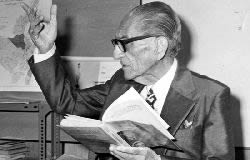
Federica Montseny Mañé was a Spanish anarchist, intellectual and Minister of Health during the Spanish Revolution of 1936, a social revolution that occurred in Spain in parallel to the Spanish Civil War.
Rosario Ferré Ramírez de Arellano was a Puerto Rican writer, poet, and essayist. Her father, Luis A. Ferré, was the third elected Governor of Puerto Rico and the founding father of the New Progressive Party of Puerto Rico. When her mother, Lorenza Ramírez de Arellano, died in 1970 during her father's term as governor, Rosario fulfilled the duties of First Lady until 1972.
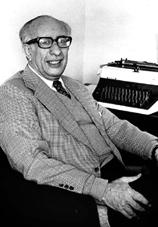
Alejandro Carrión Aguirre was a poet, novelist and journalist. He wrote the novel La espina (1959), the short story book La manzana dañada (1983), and numerous poetry books. As a journalist he published many of his articles under the pseudonym "Juan Sin Cielo." In 1956 he founded, along with Pedro Jorge Vera, the political magazine La Calle. He directed the literary magazine Letras del Ecuador. He received the Maria Moors Cabot prize (1961) from the Columbia University Graduate School of Journalism as well as the Ecuadorian National Prize Premio Eugenio Espejo (1981) for his body of work. He was the nephew of Benjamín Carrión and Clodoveo Carrión.
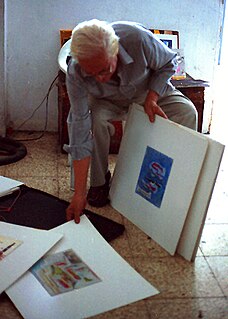
Luis Enrique Tábara is a master Ecuadorian painter and teacher representing a whole Hispanic pictorial and artistic culture.
Aníbal Villacís was a master painter from Ecuador who used raw earthen materials such as clay and natural pigments to paint on walls and doors throughout his city when he could not afford expensive artist materials. As a teenager, Villacís taught himself drawing and composition by studying and recreating the illustrated ad posters for bullfights in Quito. In 1952, Jose Maria Velasco Ibarra, former President of Ecuador, discovered Villacís and offered him a scholarship to study in Paris.

Judith Gutiérrez Moscoso was an Ecuadorian painter who lived and worked in Ecuador and Mexico. Along with other female artists, she formed part of the Guayaquil School for Contemporary Plastic Arts and was active in militant groups such as the Union of the Women of Guayas, a precursor to Ecuadorian feminist organizations.

Hugo Gunckel Lüer was a Chilean pharmacist, botanist, and university professor.

Enrique Gil Gilbert was an Ecuadorian novelist, journalist, poet, and a high-ranking member of the Communist Party of Ecuador.
Los Baby's are a rock and ballad band from Yucatán, Mexico. Their native town of Panabá is close to Mérida, the state capital.

Karina Galvez is an Ecuadorian American poet. She was born in Guayaquil, Ecuador, July 7, 1964. She lived in California, United States during 1985-2012. Since 2012 she resided in Ecuador, but flew extensively through the world. In 1995, she published her book "Karina Galvez – Poetry and Songs", which includes both English and Spanish versions of her poems and a prologue written by León Roldós Aguilera, former vice-president of Ecuador. In 1996, her "Poem for My Mother" won 2nd place in the annual Latin American poetry contest organized by the "Casa de la Cultura" in Long Beach, CA. She is also a song writer and has written children's poems and short children's stories.

The Coat of arms of Madrid, the capital of Spain, has its origin in the Middle Ages, but was redesigned in 1967. In 2004 a logo it includes a shield similar to the symbol of the city and its council.

The Guayaquil Group was a literary group from the 1930s - mid 1940s, that emerged as a response to a chaotic social and political climate where the Ecuadorian "montubio" and mestizo were oppressed by the elite class, priests, and the police. It was composed of five main writers: Joaquín Gallegos Lara, Enrique Gil Gilbert, Demetrio Aguilera Malta, José de la Cuadra, and Alfredo Pareja Diezcanseco. Their works aimed to portray "social realism" as a form of displaying the real Ecuadorian montubio and cholo. The group eventually disintegrates after the death of two of their writers, José de la Cuadra and Joaquín Gallegos Lara, the inactivity in literature by Enrique Gil Gilbert, and the long trips away from Ecuador by Demetrio Aguilera Malta and Alfredo Pareja Diezcanseco in the mid 1940s.
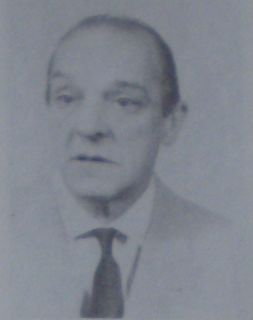
Miguel Ligero (1911–1989) was a film, television and theater actor from Argentina.
Pablo Luna Carné was a Spanish composer. His best-known composition is the aria "De España vengo" from the zarzuela El niño judío.
Antonio González Caballero (1927–2003) was a Mexican painter, pedagogue and screenwriter. His most famous work is the play Nilo, mi hijo. Famous film La Casa del Pelícano is based on it.

Isabelino Canaveris (1852-c.1915) was an Uruguayan patriot, military, revolutionary and politician. He had an active participation during the Uruguayan Civil War between Blancos and Colorados.
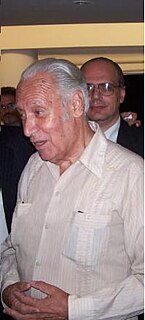
Alberto René Methol Ferré was a Uruguayan thinker, writer, journalist, teacher, historian and theologian. He has been described as one of Latin America's most fertile and original thinkers.
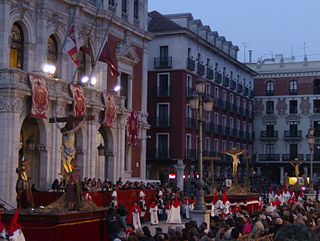
The Holy Week in Valladolid is one of the main tourist attractions, and cultural and religious events of Valladolid and the surrounding province during Holy Week in Spain. It boasts of renowned polychrome sculptures, created mainly by sculptors such as Juan de Juni and Gregorio Fernández, who were active when the city served as the imperial court. The city's National Sculpture Museum has a total of 42 images for the processions. The Holy Week in Valladolid is known to depict the Passion with great fidelity, rigor and detail.
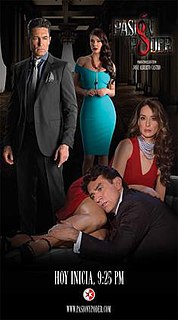
Pasión y poder is a Mexican telenovela produced by José Alberto Castro for Televisa. It is a remake of the Mexican telenovela Pasión y poder, produced in 1988. It was created by Marrisa Garrido and developed by Ximena Suárez.

Ruth Rivera Marín was a Mexican architect. Her professional experience centered on teaching, institutional management, theory and practice related to architecture. She was the first woman student of the College of Engineering and Architecture at the National Polytechnic Institute.


